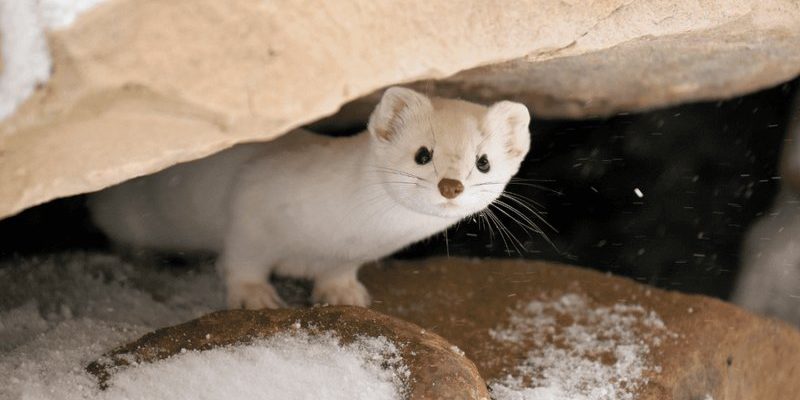![Comparing The Ermine Vs. [Similar Species]](https://gudri.com/wp-content/uploads/2025/06/Comparing_The_Ermine_Vs___Similar_Species__image_0.jpg)
You might be wondering why it matters to know the difference between them. Understanding these two species not only helps us appreciate the diversity of nature but also gives us insights into their habitats, behaviors, and the roles they play in their ecosystems. Let’s dive deeper into the world of the ermine and the weasel, comparing their looks, habitats, behaviors, and more.
Physical Characteristics
When it comes to physical appearance, the ermine and the weasel have some similarities but also some key differences. Both animals have long, slender bodies that make them excellent hunters. The ermine, known scientifically as *Mustela erminea*, usually has a beautiful white coat in winter that blends perfectly with snowy landscapes. In contrast, during warmer months, their fur turns a rich brown, creating a striking appearance that many people adore.
On the other hand, the weasel—*Mustela nivalis*—is a bit smaller and often has a lighter brown coat year-round. You might notice that the weasel has a more general look, while the ermine is more like a fashionista, sporting seasonal styles. Both animals have short legs, small ears, and sharp claws designed for digging and climbing, but their coloration is a major giveaway when you’re trying to tell them apart.
Habitat and Distribution
Both the ermine and the weasel are found in various parts of the world, but they do have distinct preferences for their habitats. The ermine thrives in colder regions, often seen in forests, grasslands, and even mountain environments that experience freezing temperatures. They tend to be more common in areas where there’s ample cover for hunting, like shrubs and tall grasses.
In contrast, the weasel prefers a wider range of habitats. You might spot them in fields, woodlands, and even urban areas where food sources are abundant. They’re incredibly adaptable creatures, which adds to their charm. While both animals can be found in North America and Europe, the ermine usually gravitates towards the northern latitudes, while the weasel has a more cosmopolitan approach to its living situation.
Diet and Hunting Behavior
Let’s talk about what these little hunters eat. Both the ermine and the weasel are carnivores, meaning they primarily feast on meat. They have impressive hunting skills and rely on swift movements and sharp claws to catch their prey. The ermine often targets small mammals, birds, and even insects, depending on what’s available in their environment. Imagine watching a tiny, furry ninja as it moves stealthily through the underbrush!
The weasel, while also hunting small mammals, might even take on larger prey compared to its size, thanks to its boldness. They can often be seen chasing down rabbits or birds, using their speed to outmaneuver their dinner. Their hunting tactics can sometimes be compared to those of a skilled athlete, making quick, agile movements that leave their prey little chance of escape.
Social Behavior and Reproduction
When it comes to social interactions, the ermine and the weasel lead pretty solitary lives. Both species are primarily nocturnal, which means they’re most active during the night. This behavior helps them avoid larger predators while hunting for food. They don’t form packs like wolves do; instead, they prefer their own company, only coming together during mating season.
Speaking of reproduction, the ermine gives birth to a litter of kits, usually in spring. The kits are born blind and helpless, depending on their mother for everything in those crucial early weeks. The weasel, too, has a similar reproductive cycle, with females giving birth to several kits around the same time. However, as they grow, young weasels can often be seen playing together, showing a bit more social behavior than their ermine counterparts.
Conservation Status
Both the ermine and the weasel currently have stable populations, but they do face some threats. Habitat loss due to agriculture and urban development poses risks to their environments. Additionally, climate change can alter their habitats, especially for the ermine, which relies on cold climates. Conservation efforts are important to ensure these beautiful animals continue to thrive.
Understanding their status in the wild can help raise awareness about the importance of preserving their habitats. If you’re feeling inspired, there are plenty of ways to support conservation efforts, like volunteering with local wildlife organizations or simply spreading the word about these fascinating creatures.
In the end, both the ermine and the weasel remind us of the beauty and complexity of nature. They each have their own strengths, quirks, and roles in their ecosystems. Whether you admire the ermine with its stunning seasonal fur or find joy in the weasel’s adaptability, both species contribute uniquely to the biodiversity around us.
So, next time you’re out in nature or flipping through a wildlife book, take a moment to appreciate these incredible animals. Each little creature has its own story, and understanding them not only enriches our lives but also helps us foster a deeper connection with the natural world.

